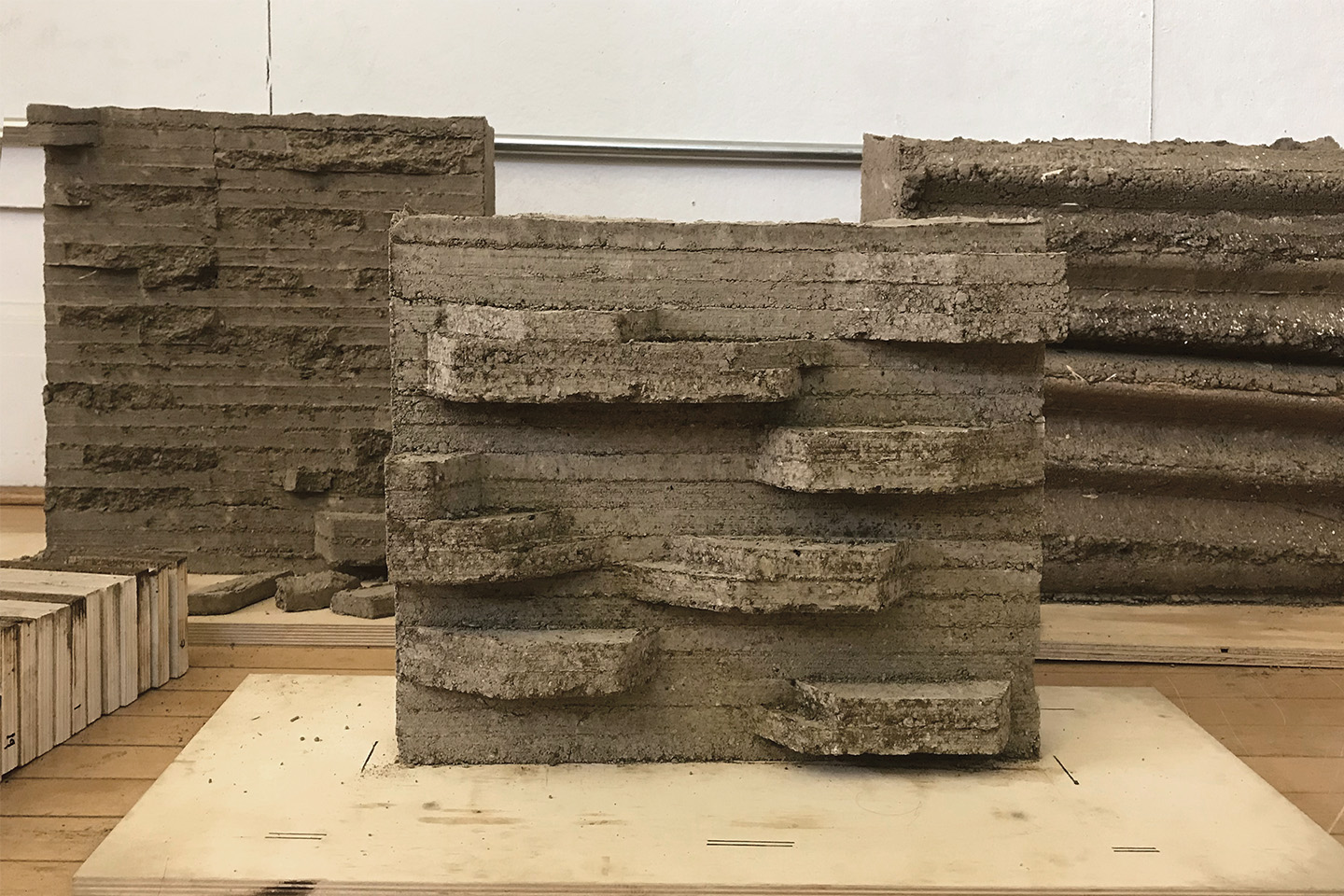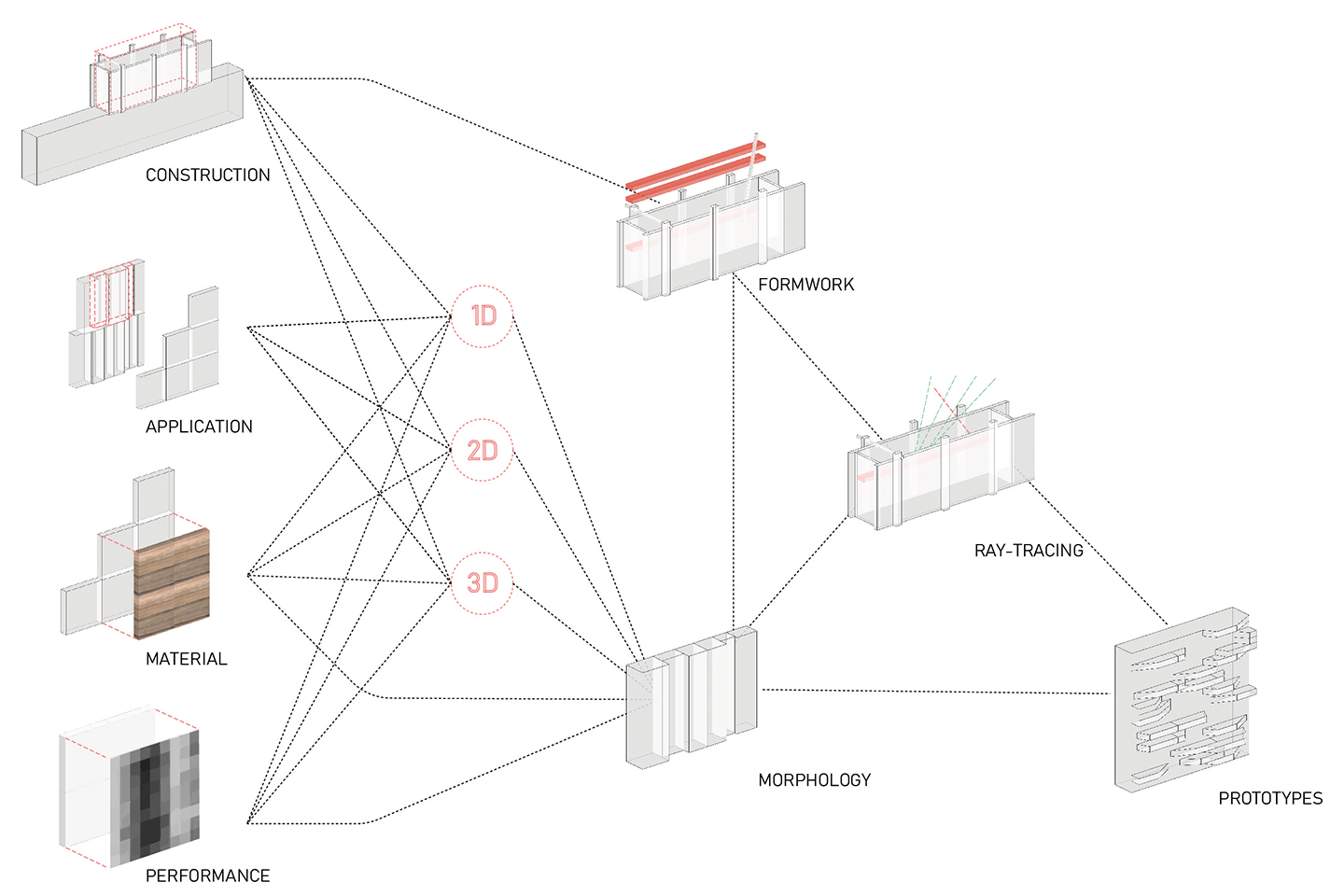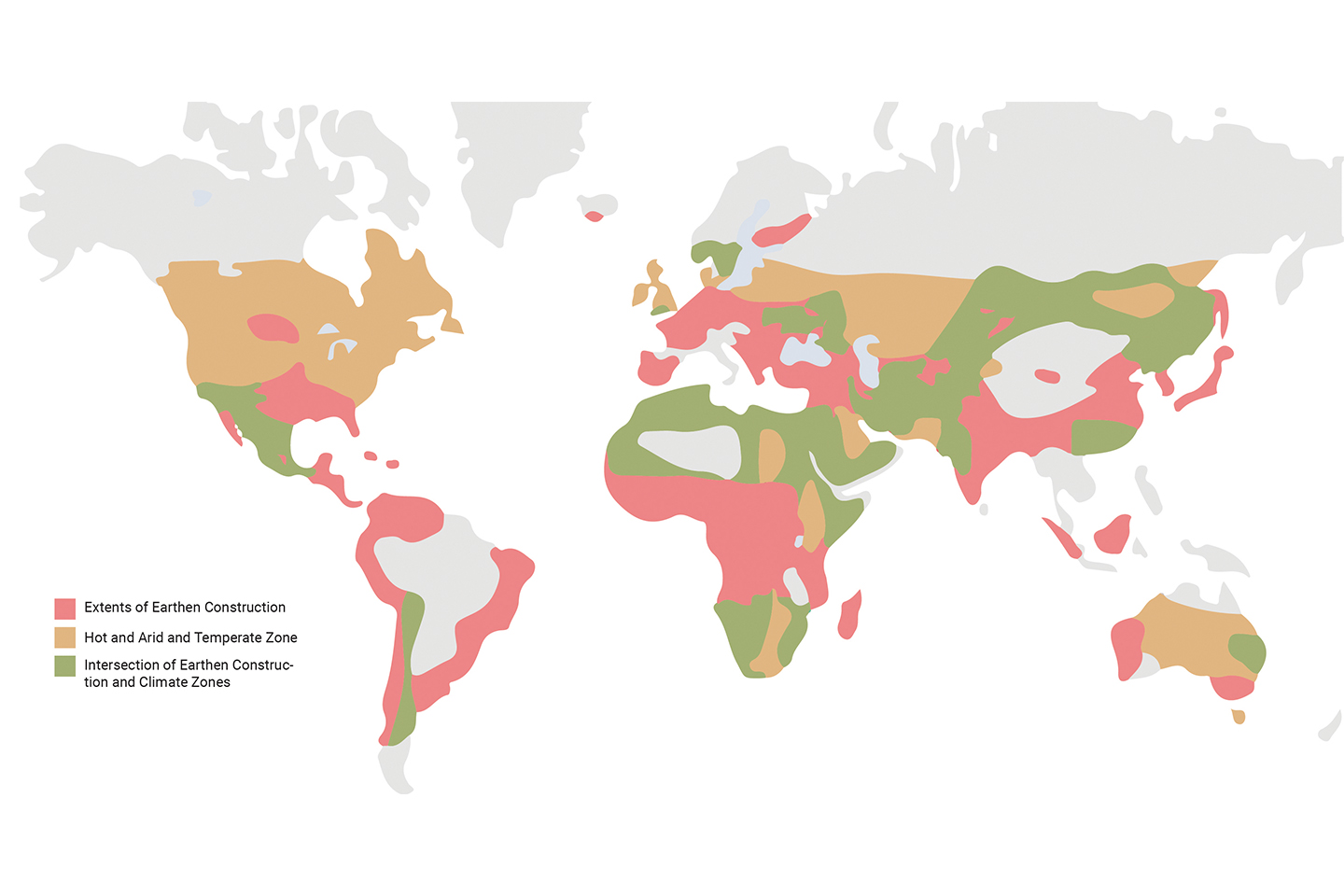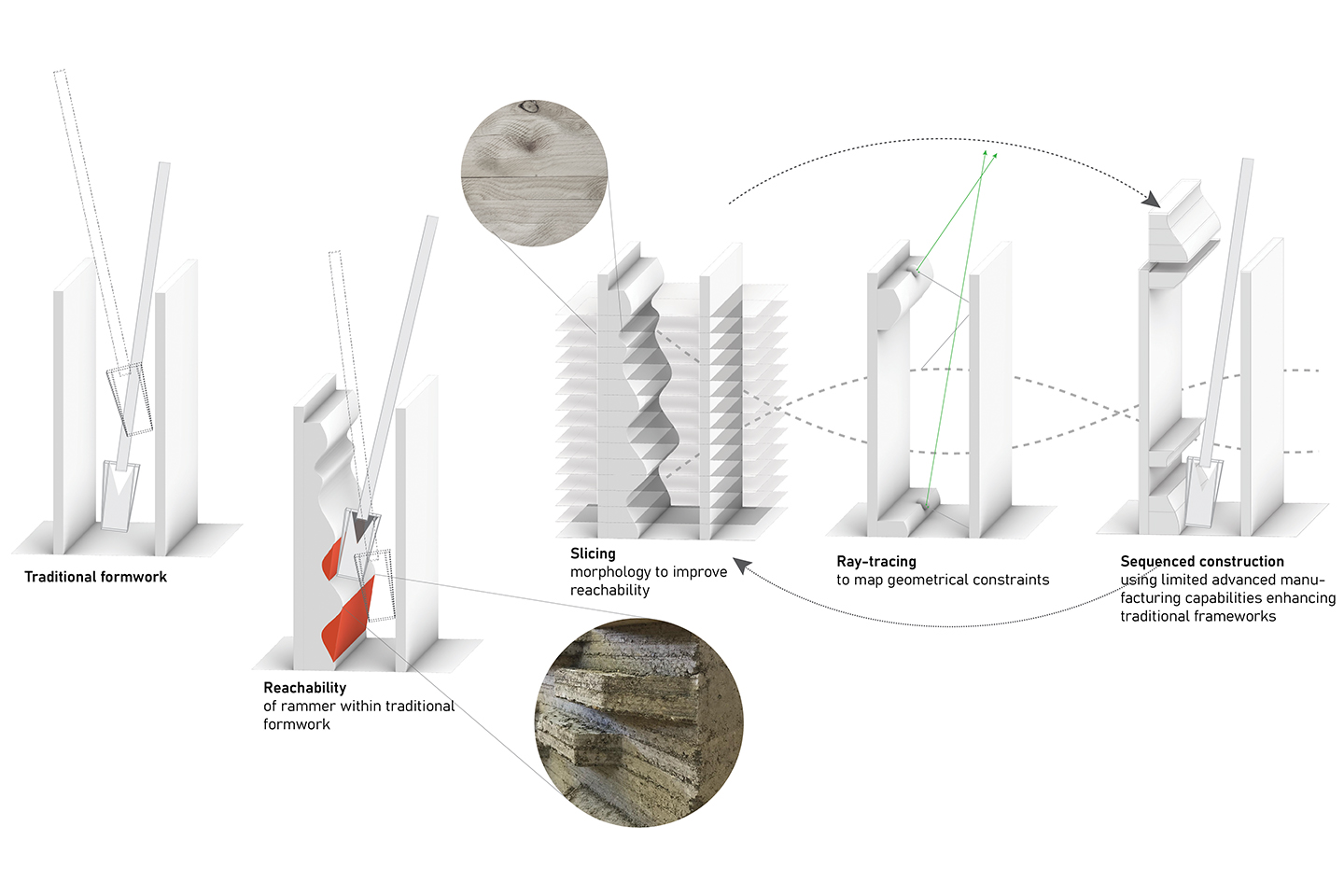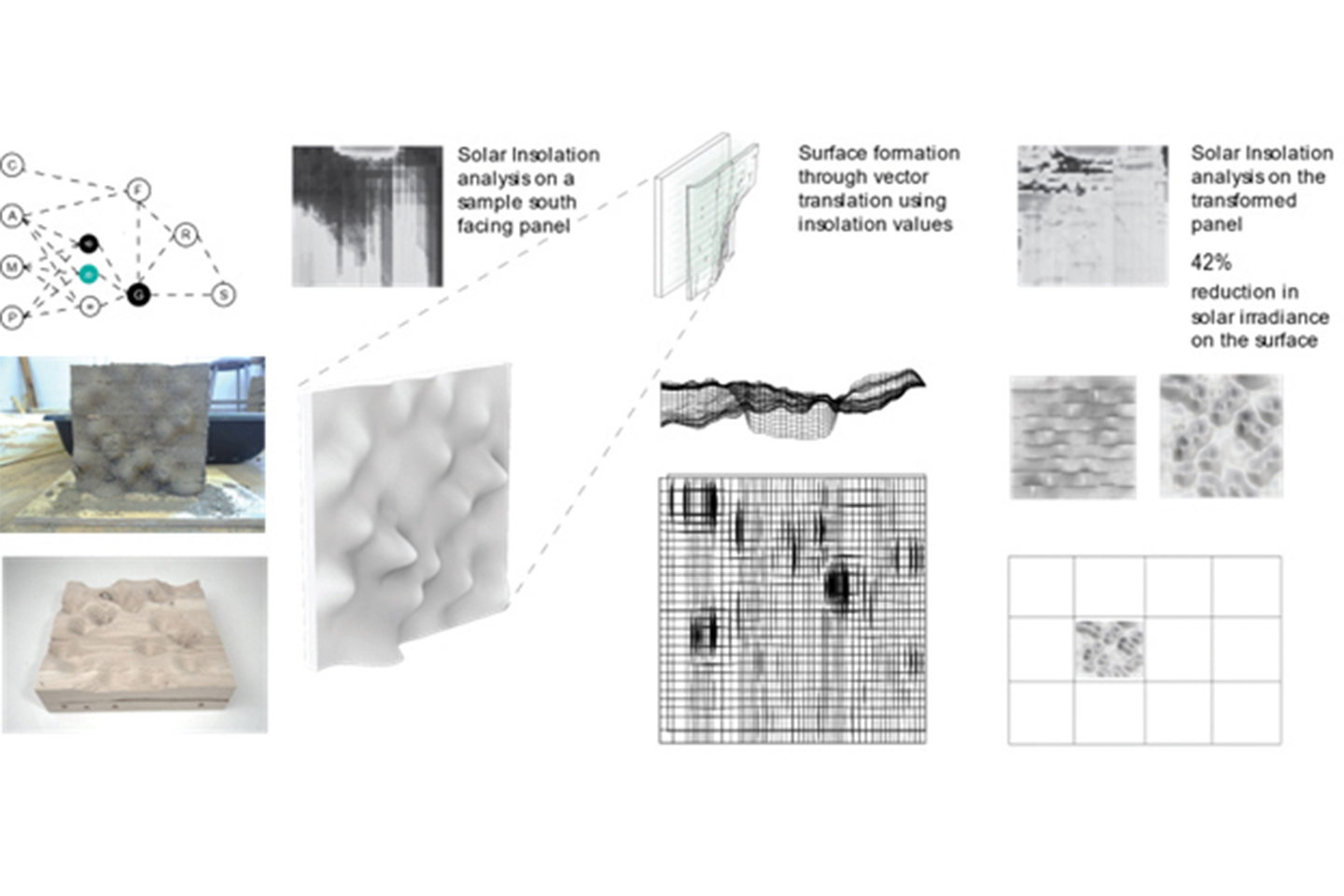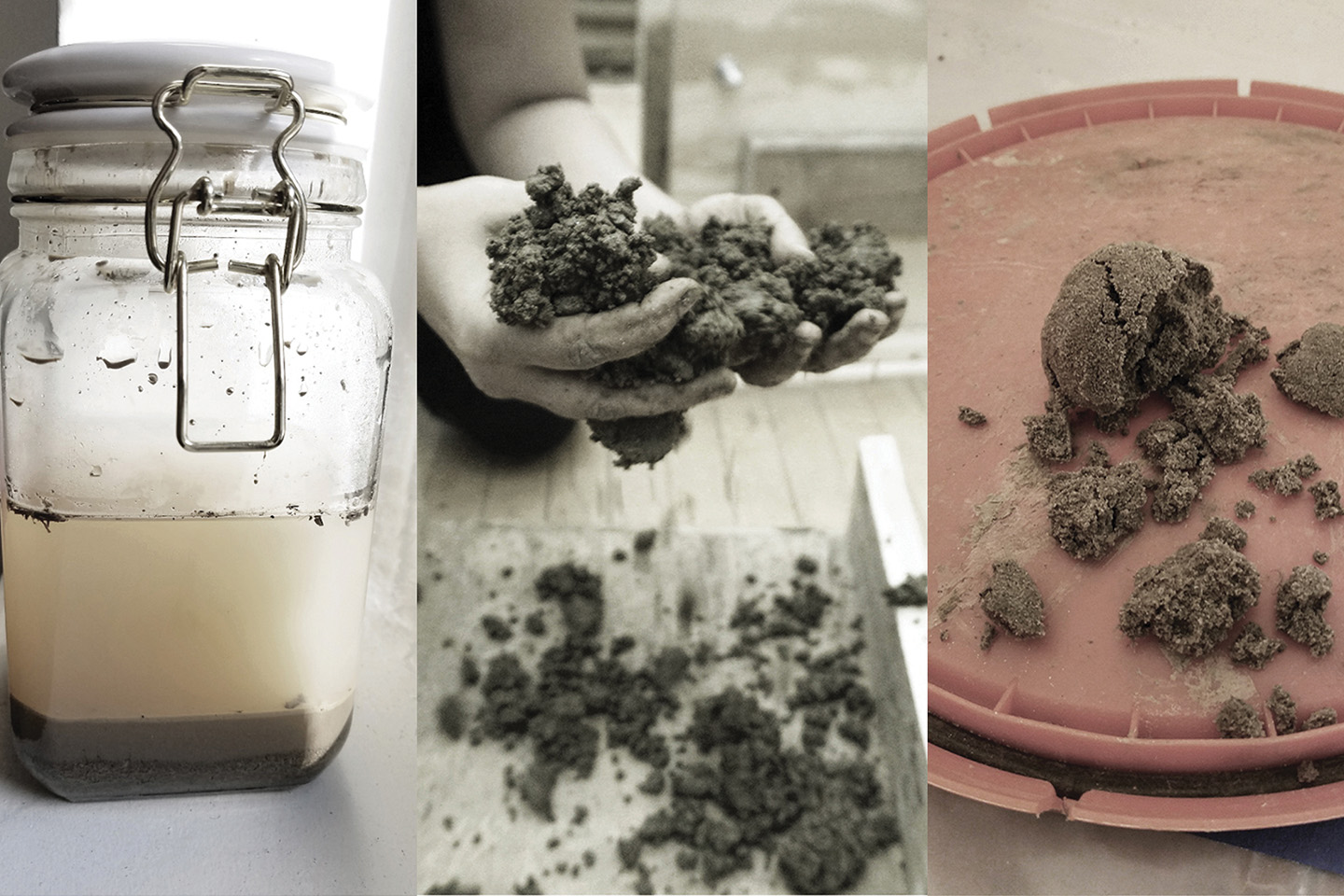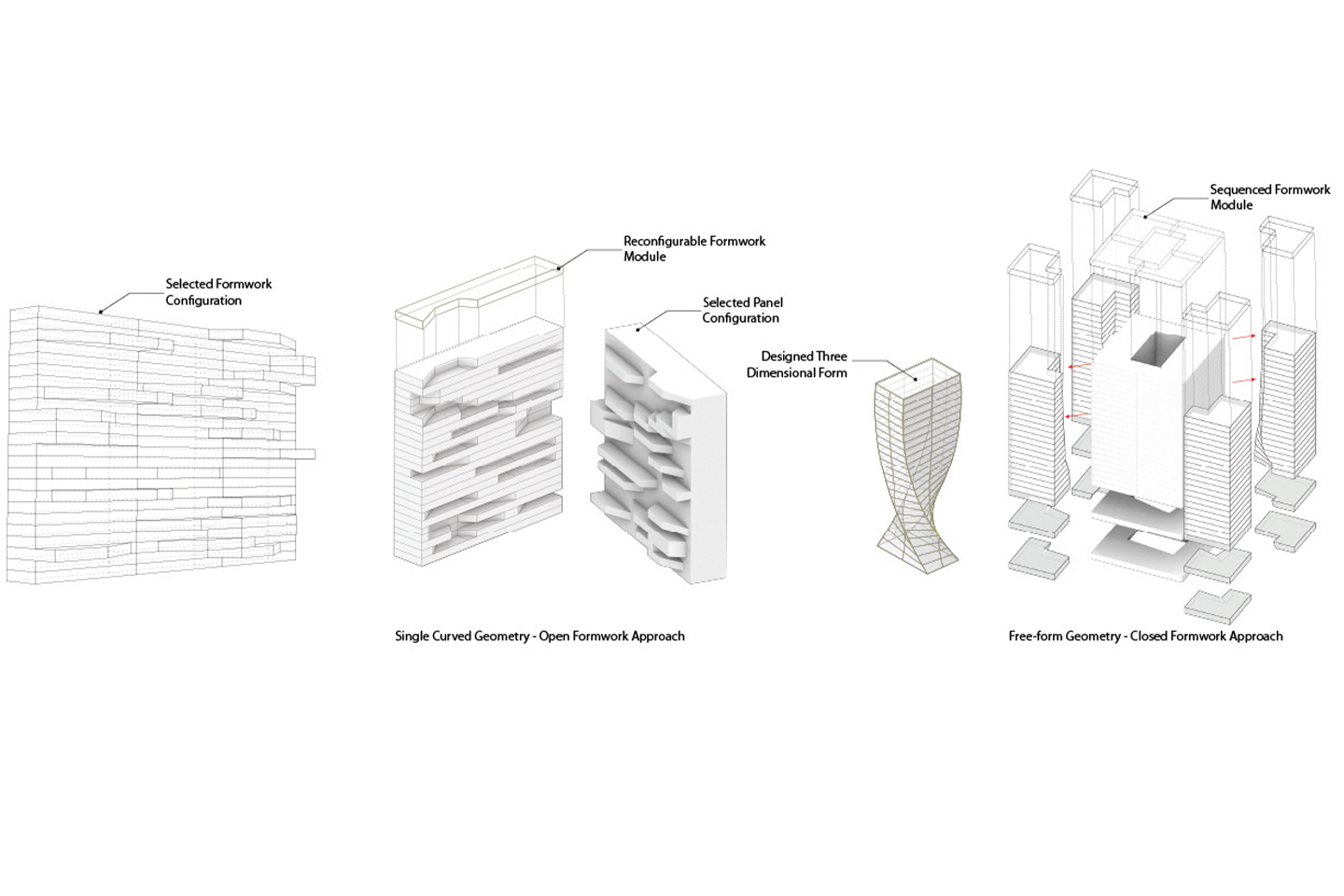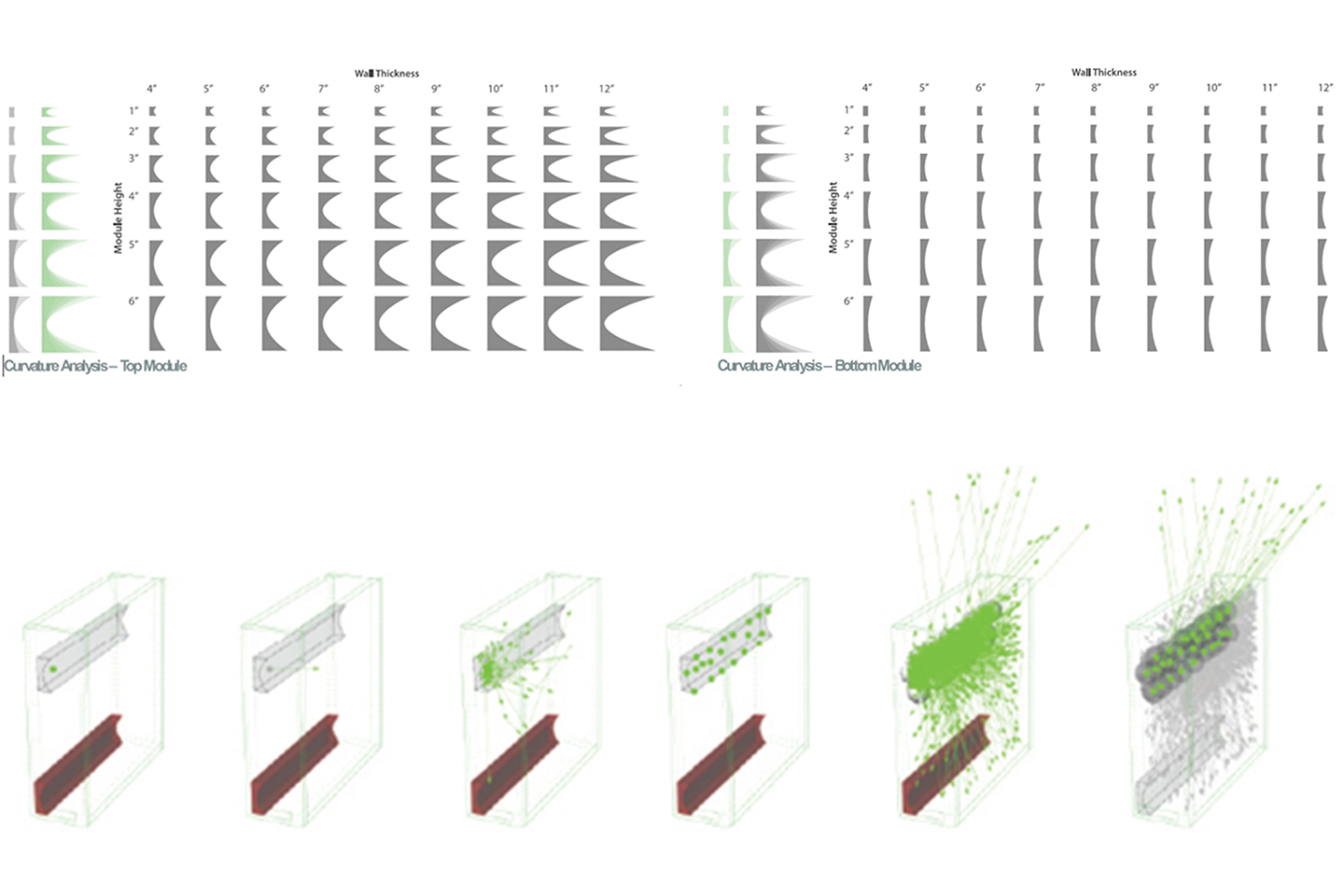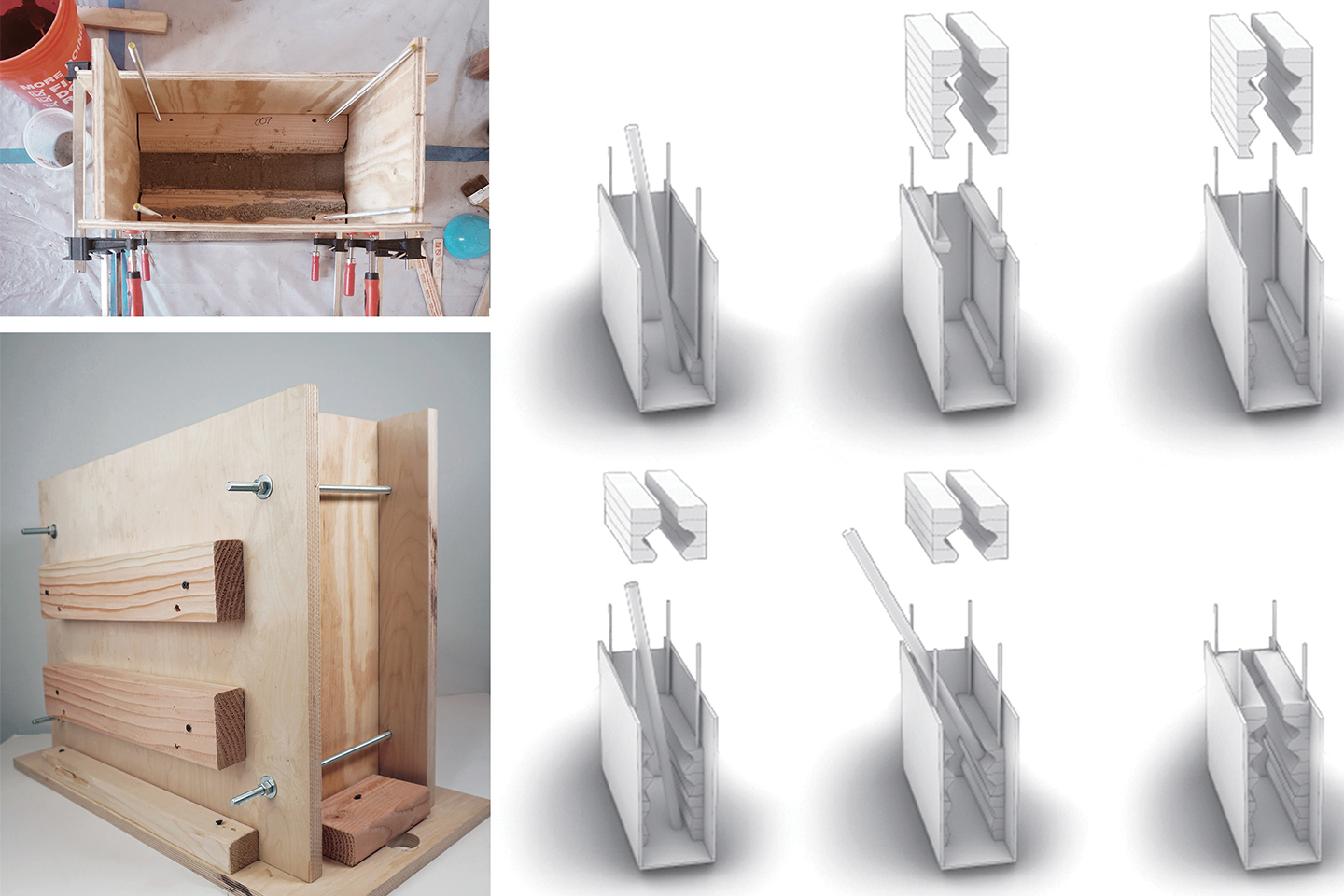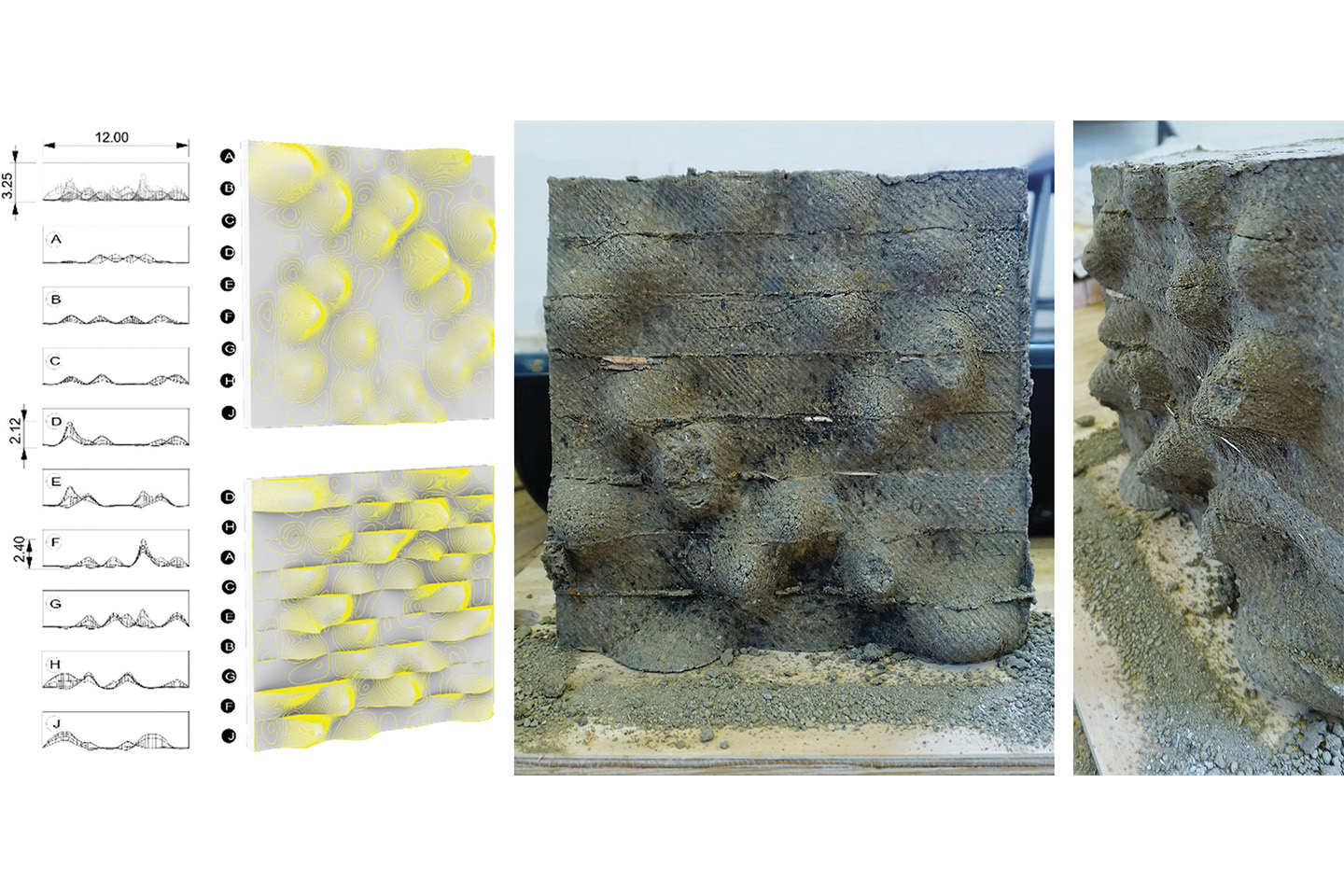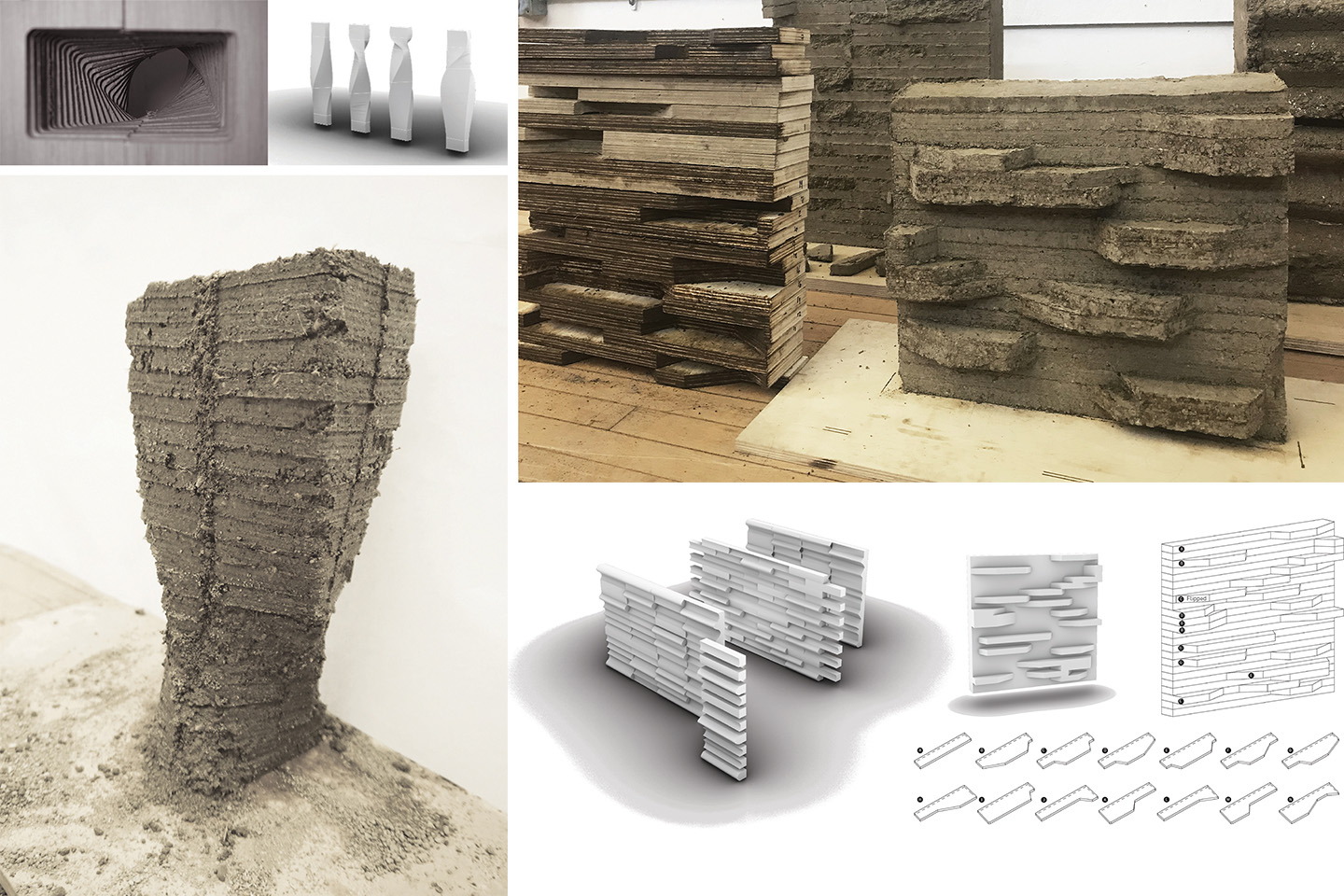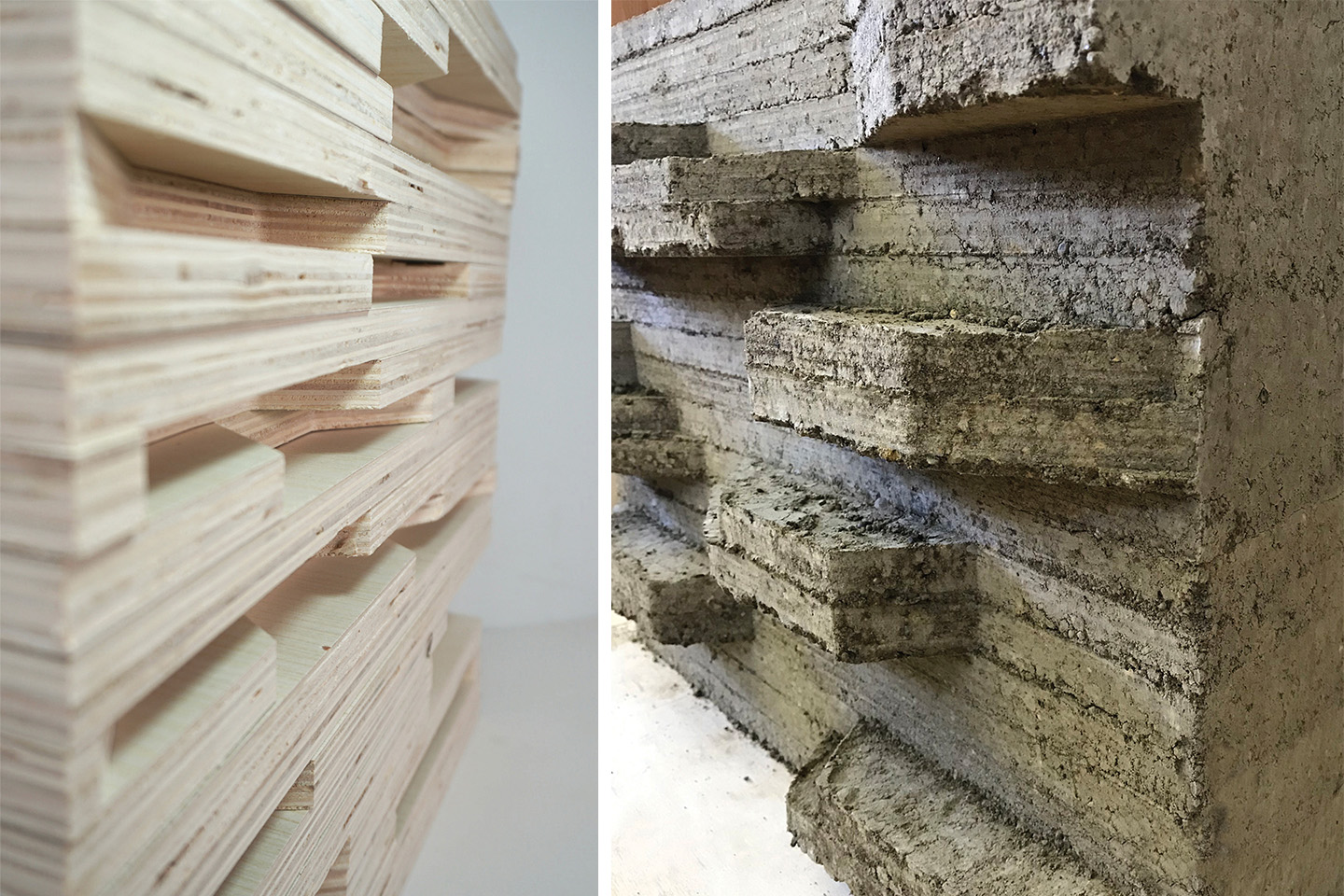Discretizing Low-tech Adaptive Rammed Earth Formwork
| CMU School of Architecture | 2022 |
|Design Research |
Rooted in a hybrid material and climate-based approach to design, this study proposes a computational design framework for low-tech rammed earth adaptable formwork that allows for variable surface figuration, related to thermal and aesthetic design parameters. Built as vertical panel prototypes, or in-situ vertical construction, this study proposes to couple thermal performance with sequenced constructability of varied surface geometries through an adaptable repetitive kit of part formwork that can be constructed with limited advanced manufacturing capabilities. Addressing the need for low-impact sustainable construction in vast areas of the world where thermal mass coupled with earthen construction would radically contribute to the reduction of carbon footprint, this study builds upon the extensive cultural and ecological history of rammed earth in those regions. Providing a novel methodology for shaping in-situ vertical rammed earth design to construction, this study utilizes ray-tracing simulation that sets constraints for geometric constructability. Our goal is to address the perception of earthen construction as a low-tech natural anachronistic material and expand its design repertoire while addressing a climate-sensitive approach to shaping architectural systems. Here, the ray-tracing analysis is used to determine the geometric capacity for continuous load bearing of earthen material being rammed vertically, while enhancing its thermal mass effectiveness through surface geometry. This method expands on the design vocabulary of the earthen construction beyond highly simplified shapes, or material color variation, and also differs from other methods that use complex horizontally laid formwork to erect panels vertically post-curing. This study aims to embrace and build upon vernacular practices of rammed construction, with added design variability, rooted in local circular material practice.

